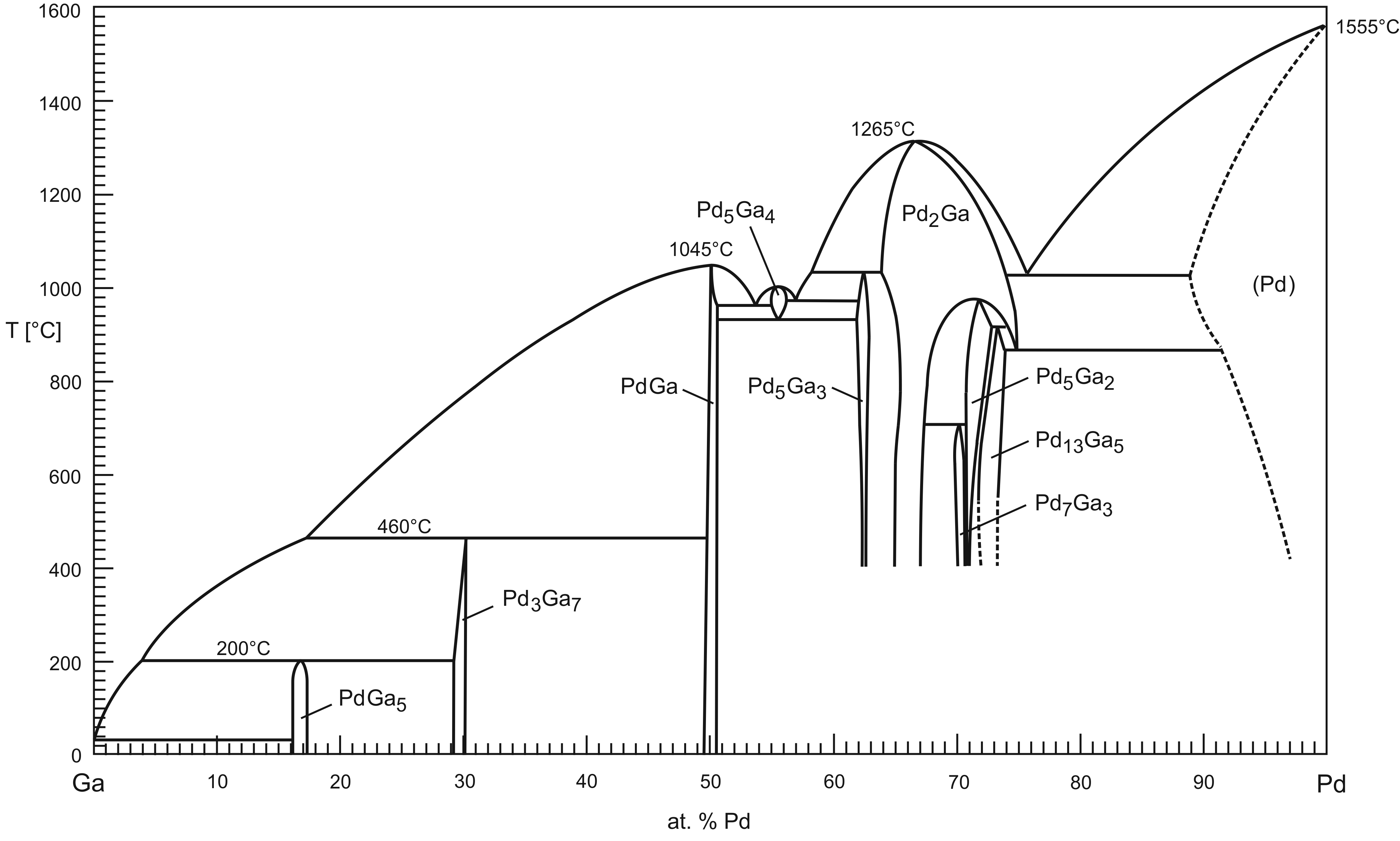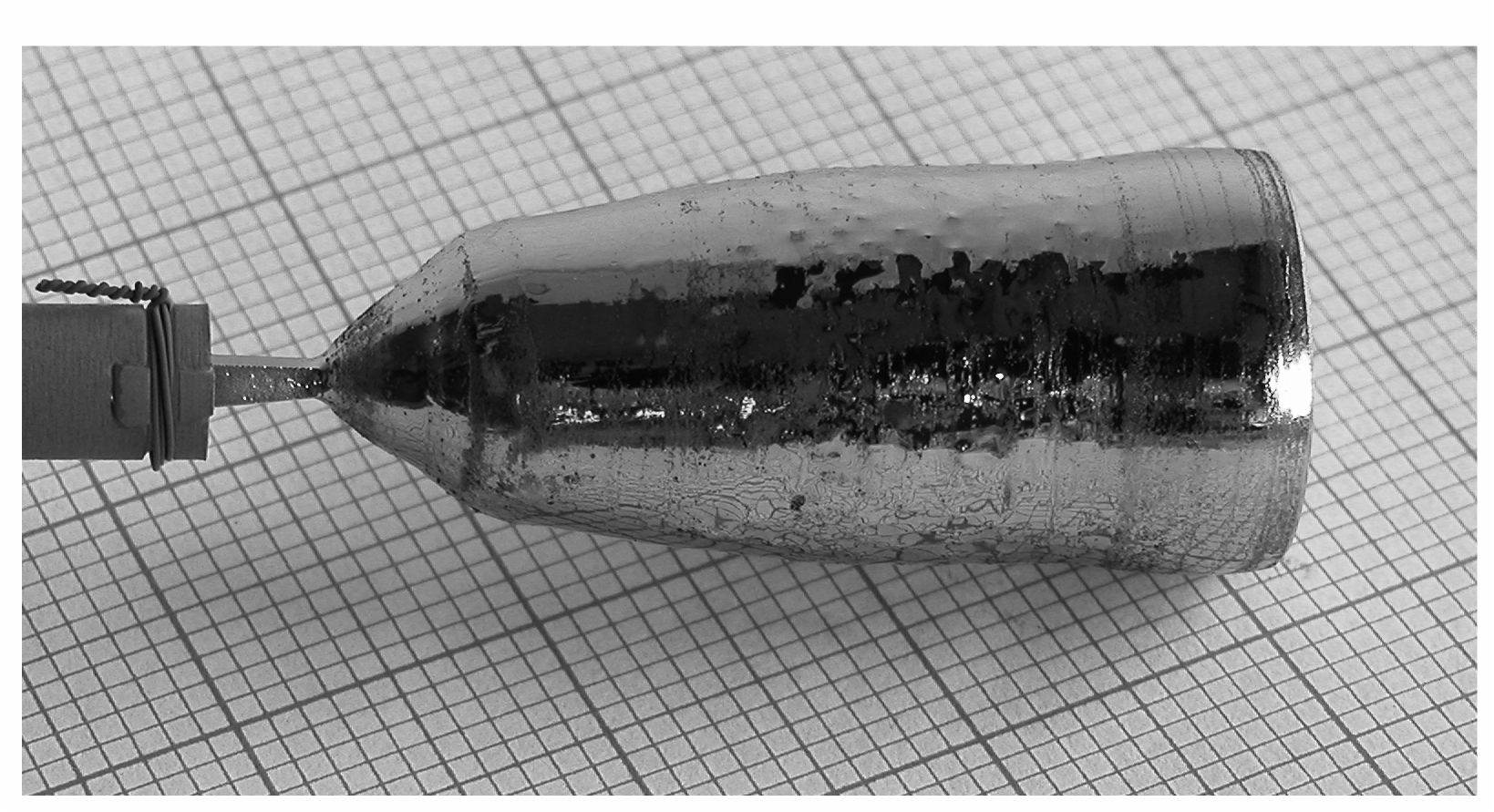Some intermetallic compounds in the Ga-Pd system have recently been explored as highly selective heterogeneous catalysts in the semi-hydrogenation of acetylene [1] which is a huge business in chemical industry. Compared to pure Pd or alloyed catalysts, intermetallic compounds with well-defined crystalline structures and therefore fixed sites of the catalytically active element have a considerably higher long-term stability. This has been explained according to the active-site isolation concept [2].
Although the technical application of catalysts made from intermetallic phases will be based on ultra-fine powders or even nanoparticles, single crystals of these compounds are needed to study their intrinsic properties, e.g. their anisotropic surface structures, and basic processes of catalysis. It is only recently that advances in the growth of large single-grain crystals allow the UHV preparation of low-index atomic surfaces to perform fundamental investigations by means of surface analytical tools.
Especially the phases PdGa (FeSi structure type, space group P213), Pd3Ga7 (Ir3Ge7 structure type, space group Im3m) and Pd2Ga (Co2Si structure type, space group Pnma) have shown their high potential as heterogeneous catalysts [3]. That is, why we try to grow cm3-size single crystals of these Ga-Pd phases. Each phase needs specific conditions for crystallization that can be deduced from the phase diagram, see Fig. 1 [4].
 Fig. 1: Ga-Pd phase diagram, after [4]. Fig. 1: Ga-Pd phase diagram, after [4].
PdGa can be grown either from a congruent melt or from Ga- or Pd-rich high-temperature solutions. The same options principally exist for growing Pd2Ga, but quite high liquidus temperatures and accordingly a high Ga vapour pressure suggest crystallization from a Ga-rich melt. Contrary, Pd3Ga7 is only stable at temperatures lower than 460°C and crystal growth is limited to a crystallization from a Ga-rich solution at relatively low temperatures making materials transport and the preparation of inclusion-free single crystals the main problem.
We have grown single crystalline samples of Pd3Ga7, PdGa and Pd2Ga by the Czochralski method from off-stoichiometric melts. The obtained PdGa single crystals (Fig. 2) show a fairly high structural perfection [5] and offer a wide scientific playground based on the complexity of enantiomorphism and the polarity of specific faces. Pd2Ga is characterized by a broad stability region with retrograde solubility of the excess component. Thus, precipitation of the orthorhombic Pd5Ga3 phase may occur during post-growth cooling depending on the growth temperature. With Pd3Ga7 the inclusion of liquid solution droplets during growth is the most severe problem. These inclusions can even destroy the already grown crystal because of density changes occurring during the low-temperature peritectic reaction. What is common in Czochralski growth of these intermetallic phases is the need for a fully metal-sealed growth chamber to prevent traces of oxygen from entering the system and covering the melt surface. A very low pulling rate (typically 100 µm/h) combined with additional tools to assist materials transport adjacent to the growth interface is a prerequisite to avoid mother liquid inclusions in the growing crystals.
 Fig. 2: PdGa single crystal grown from a Pd45Ga55 melt (grid size: 1 mm). Fig. 2: PdGa single crystal grown from a Pd45Ga55 melt (grid size: 1 mm).
[1] J. Osswald et al., J. Catal. 258 (2008), 210.
[2] W.M.H. Sachtler, Catal. Rev. Sci. Eng. 14 (1976), 193.
[3] M. Armbrüster et al., J. Am. Chem. Soc. 132 (2010), 14745.
[4] H. Okamoto, J. Phase Equilibria Diffusion 29 (2008), 466.
[5] P. Gille et al., Intermetallics 18 (2010), 1663.
|